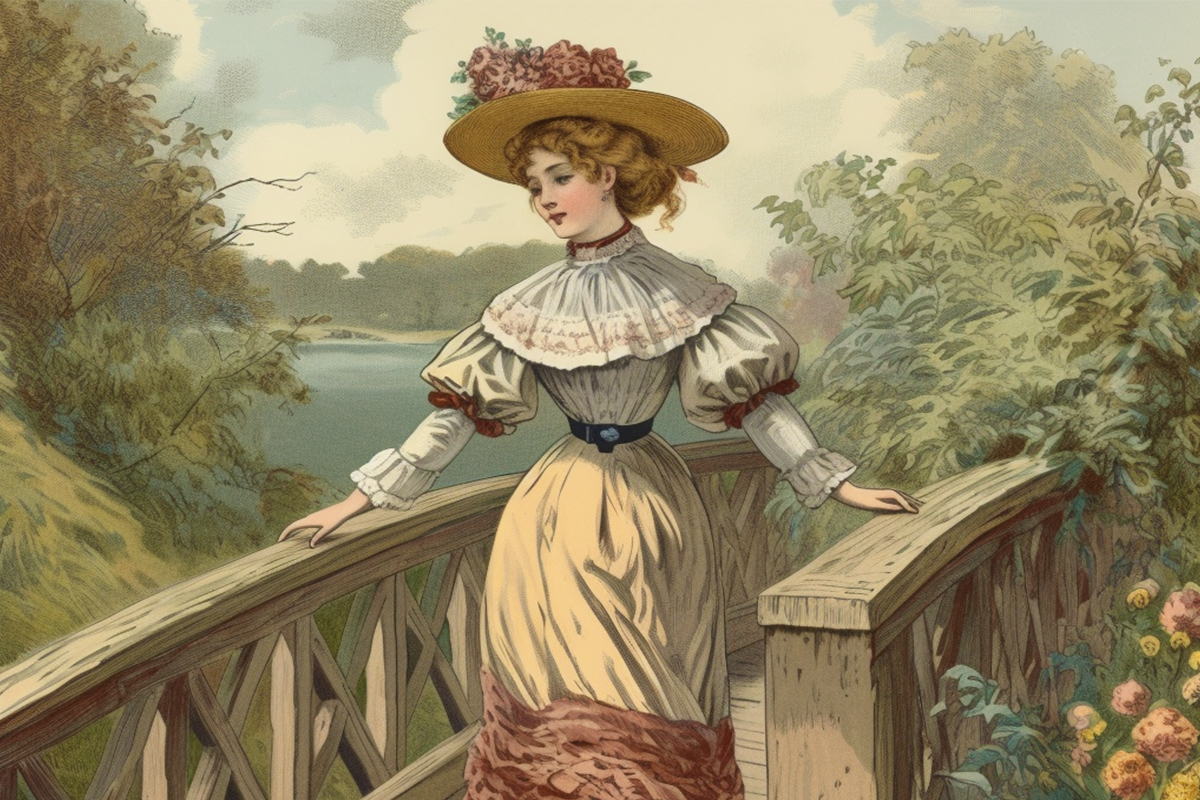Charlotte Brontë is part of a famous trio of sisters. Charlotte, Emily, and Anne Bronte were well-known poets and novelists in 19th century England. Did you know they published their poems and novels under male pseudonyms? They went by Currer, Ellis, and Acton Bell respectively.

You’re probably familiar with the Bronte sisters because you were assigned Charlotte’s Jane Eyre or Emily’s Wuthering Heights to read in high school. You may not have realized Charlotte wrote three other novels.
First, Bronte wrote The Professor, which wasn’t published while she was alive. In publication order, she wrote Jane Eyre, Shirley, and Villette. Then, The Professor was published posthumously.
Now let’s rank these novels from best to worst. Starting with…
Jane Eyre
The most familiar of Bronte’s novels, Jane Eyre, takes the top spot.
A classic Bildungsroman (coming of age story), we get to follow Jane’s life through the hardships of childhood, life as an orphan, boarding school, and her job as a governess. At Thornfield, Jane meets the mysterious Mr. Rochester, who is the guardian of the girl she has come to tutor. Jane and Mr. Rochester are instantly drawn to one another, but things are complicated. You’ll have to read the book yourself to see just how complicated…and to see if Jane and Mr. Rochester end up together.
Villette
Villette takes the second spot.
Mary Ann Evans, better known by her pen name George Elliot said, “Villette is a still more wonderful book than Jane Eyre. There is something almost preternatural in its power.” Virginia Woolf agreed, calling Villette Bronte’s “finest novel.” Woolf went on to say, “All her force, and it is the more tremendous for being constricted, goes into the assertion, ‘I love. I hate. I suffer.’”
Villette follows the life of Lucy Snowe, who travels from her home country of England to the fictional French-speaking city of Villette to teach at a girls’ school. The novel draws much of its material from The Professor, reworking the material with a female protagonist. At the school, Lucy finds adventure and romance. Bronte expertly draws Lucy’s character as she navigates poverty, independence, potential romance, and deep friendships.
The highlights in this novel include the parallels with Charlotte’s own experience as a school teacher, cliff hangers that pull you along, and examinations of womanhood from different perspectives. The downside is the frequent inclusion of French sentences and paragraphs. You could easily get bogged down by it all, but if you are a lover of classic literature or Jane Eyre, it is well worth the read.
Shirley
Shirley Keeldar and Caroline Helstone are total opposites. Shirley is an independently wealthy heiress who defies society’s expectations while Caroline is a shy and poor girl with no prospects. Romance and rivalries create tension in this novel as struggling manufacturer Robert Moore considers a financially-driven marriage to Shirley. While his heart truly belongs to his cousin Caroline, Shirley’s heart belongs to Robert’s brother, an impoverished tutor.
The novel is set in Yorkshire during the Luddite uprisings of 1811-1812. Industrial rest and economic depression build in the background as Bronte’s characters navigate complicated relationships.
Shirley was a very significant novel for Bronte for two reasons. One, the character Shirley is who Charlotte imagined her sister Emily would have become if she hadn’t died so young. Two, Charlotte was writing this novel during the yearlong period when Anne, Emily, and her brother Bramwell all died. Perhaps writing this novel was a way for Charlotte to cope, just as many have found solace in grief through writing and creating.
The Professor
The Professor was not published during Charlotte’s lifetime. Often people’s first novels aren’t their best, as is the case here. Interestingly, this novel follows a male protagonist, unlike Bronte’s other novels.
We follow William Crimsworth’s story as he teaches at a boarding school and eventually a school for girls where he meets Frances, a young teacher-in-training. This novel supplies romance, jealousy, and gothic mystery. As you read, you’ll hear echoes of Bronte’s future work–particularly Villette, which she largely modeled after this novel.
FAQs
Did the Bronte sisters have other siblings?
Yes, Charlotte was the third of six siblings. Her two older sisters Maria and Elizabeth died when she was a young girl. For most of her life, she was with Branwell (the only brother, he was a writer and artist as well), Emily, and Anne.
Is Jane Eyre based on Charlotte Bronte’s life?
Yes, much of Jane Eyre is based on Charlotte Bronte’s life experiences. She attended different girls’ schools, including one where she and her older sisters were mistreated. Like Jane, Charlotte taught at a girls’ school and worked as a governess. In fact, some editions of the novel include a subtitle, “An Autobiography.”
Was Jane Eyre successful while Charlotte was alive?
Yes, the novel gained immediate success!
Was Charlotte Bronte ever married?
Yes, after declining three other suitors, Charlotte married Arthur Bell Nicholls, her father’s curate. (Curate is just a fancy word for a member of the clergy who assists a vicar, rector, or parish priest like Charlotte’s father.)
Did Charlotte Bronte have any unfinished novels?
Yes, she was in the process of writing a novel called Emma when she died.
How did Charlotte Bronte die?
Unfortunately, Charlotte died from pregnancy complications only a year after she and Arthur Bell Nicholls married.
- All Charlotte Brontë Books Ranked (Best to Worst) - April 29, 2023
- The 20 Best Amish Romance Novels (Uplifting & Inspiring) - April 5, 2023
- Fall In Love With The 20 Best Cute Romance Books - March 25, 2023
